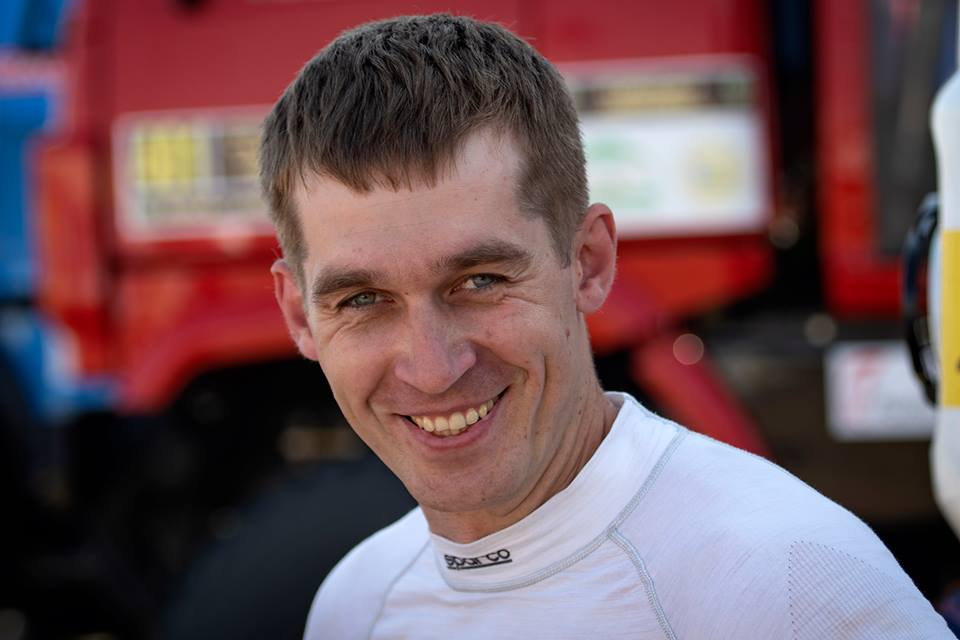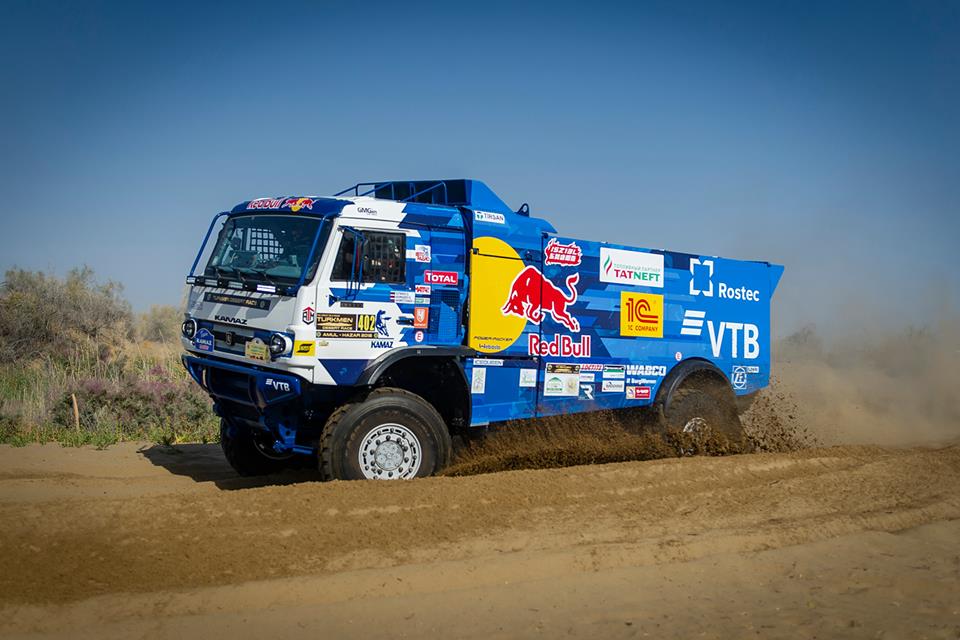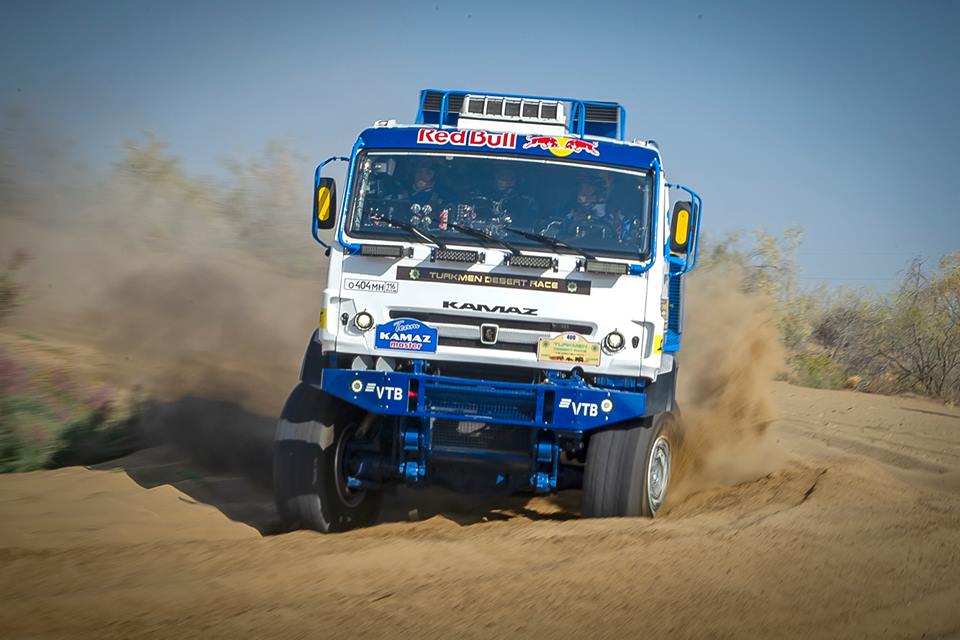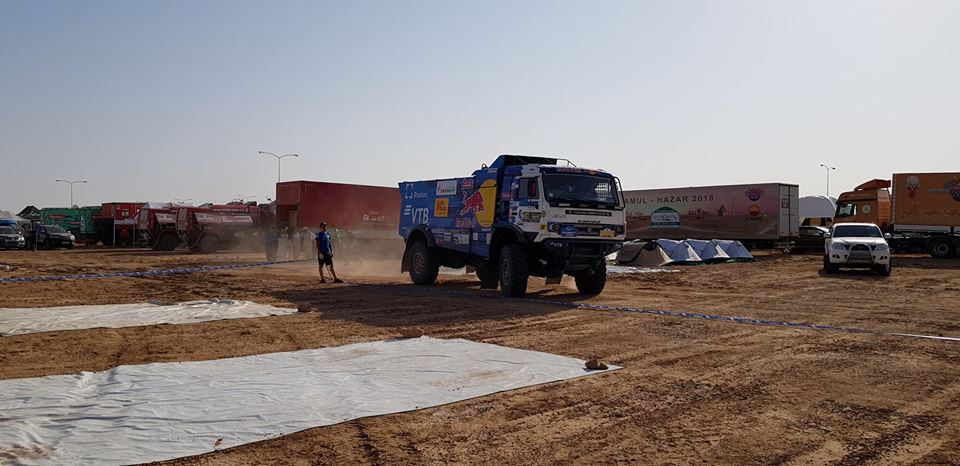
11 September, Ikiuzak
In the central square of the city The President of Turkmenistan Gurbanguly Berdimuhamedow reviewed the parade of contestants. Also the CEO of KAMAZ Sergey Kogogin took part in the race start ceremony.
Next morning the contestants were awaited by 9-kilometer prologue and right after it 247-kilometer stage Turkmenabat-Ikiuzak. Peculiarity of this rally is that assistance vehicles have a bigger daily run than race crews. If race crews go from the east to the west, crossing Karakum straight with minimum of liaisons to bivouacs; assistance crews have to drive along asphalt roads, laid from Ashkhabat to the capitals of regions from the south to the north, adding a great deal of kilometers. In order to get to bivouac in Ikiuzak on 11 September they had to pass 447 km, and on 12 September to Darwaza they will even have to drive 889 kilometers.
The desert met crews with enervating heat in places up to 48 degrees. It should be noted that just not far from Turkmenabat in 1983, a temperature record of the USSR was +51 degrees, and the highest temperature in the sand reaches +80 degrees.
The landscapes observed by mechanics on the way to Ikiuzak resembled Astrakhan landscapes, familiar from the Russian championship in rally-raids: high sandy hillocks overgrown with shrubs are chaotically scattered to the horizon. In some places, an artificially created clay parapet stretching along the broken asphalt for many, many kilometers protects the road from moving huge masses of sand.
But the route for the race crews had no roads, only directions, and seemingly freedom to choose courses. However, taking into account the fact that the landscape was very difficult and deviations of the road-book instructions threatened with the risk of getting stuck, lost and staying without help, contestants tried not to lose sight of each other and, if possible, follow the tracks of the leading cars.
The crews started the main SS upon the results shown on the short prologue. In the middle of the track Dmitry Sotnikov’s crew overtook MAZ of Siarhei Viazovich and almost to the finish both trucks were going what is called neck to neck. Airat Mardeev’s crew was not far behind them. Thanks to a rather fast pace, the trucks eventually ended up ahead of the main rally composition, letting ahead only eminent pilots from the car category Nani Roma, Matthieu Serradori, Miroslav Zapletal and Harry Hunt.
In general, the stage went for KAMAZ crews in the regular mode. The best in the truck category was the crew of Dmitry Sotnikov (03:58:24), the Belarusian crew of Siarhei Viazovich had the second best time (04:03:19), the third was Airat Mardeev’s crew (04:03:24). At the end of the day the very three crews took 6,7,8 places in the general standings respectively.
Quotations
Airat Mardeev, pilot of crew No 400
"It would seem quite a monotonous and boring track, checking more physical endurance of the crews. But on the other hand, such a beginning of a long race may be reasonable, as many contestants need to "roll into" the race, feel the car, acclimatize, after all. Of course you could find more variety, trying to cut, overtake. But no one rationally did it. It was also dangerous to turn off the rolled track because dried bushes can easily pierce tires, and nobody wanted to change tires in this heat. "
Dmitry Svistunov, co-pilot of Airat Mardeev’s crew No 400
"There are pretty short references in the road book. The logic of the book developers is quite understandable. Organizers try not to lose participants on the track. The book is written so that everyone would move in approximately the same channel. I would also mention that there are, of course, some differences in the manner of the route presentation, in comparison with, for example, "Silk Way Rally" or "Dakar". I wouldn’t say what is better or worse, you just have to get used to the peculiarities. "
Ruslan Akhmadeev, co-pilot of Dmitry Sotnikov’s crew No 402
"The road-book of Rene Metge is made up based on the fact that the pilot is the main person in the crew and it is he who chooses the speed, uses his wit and intuition, whether it should be expected or not, for example, to have each pit foreseen and carefully indicated in the road-book. In this sense, when choosing the speed, one must be very careful and have a good reaction. The navigator in this case is more of a prompter. "


